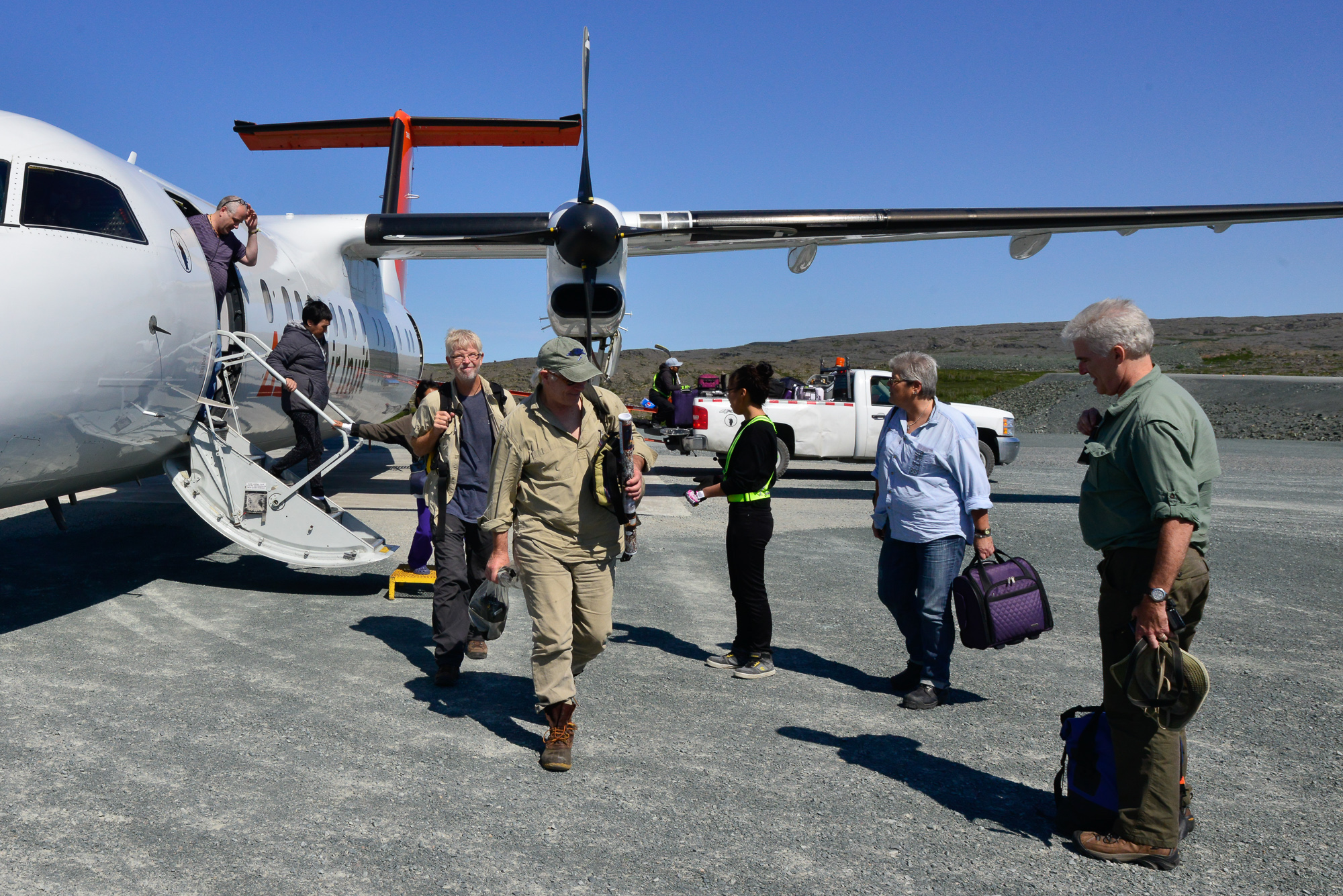
Traditional Knowledge, Environmental Sustainability, and a New Way Forward
Tourists and residents disembark form the Air Inuit Twin Otter aircraft and head towards the little Umijujaq terminal. The people of Umijuaq recognize that their culture and their homeland is the driver and enabler of a sustainable economy.

Visiting the Inuit Homeland
Umijujaq, Nunavik, Quebec
Ecotourists exit the little Twin Otter aircraft that brought them to Umijujaq. Covering over 10,000 square miles, Tursujuq National Park, the largest in the province, is located near the shores of Hudson Bay and the Inuit community of Umiujaq. Traces of human activity dating back 3,000 years have been found in the area, as well as evidence of Inuit and Cree trading posts. The Inuit of Umijujaq assisted in the creation of the park, choosing a sustainable economy based upon traditional culture and a pristine natural environment rather than a short-lived and environmentally destructive economy based on hydropower and mineral extraction. They encourage visitors to experience the captivating beauty of this immense territory and cultural crossroads defined by the spectacular Hudson cuestas, Lac Tasiujaq with its brackish tidal waters (a haven for seal and beluga), and Lac Wiyâshâkimî, a double meteor impact basin and the second largest natural lake in Québec.
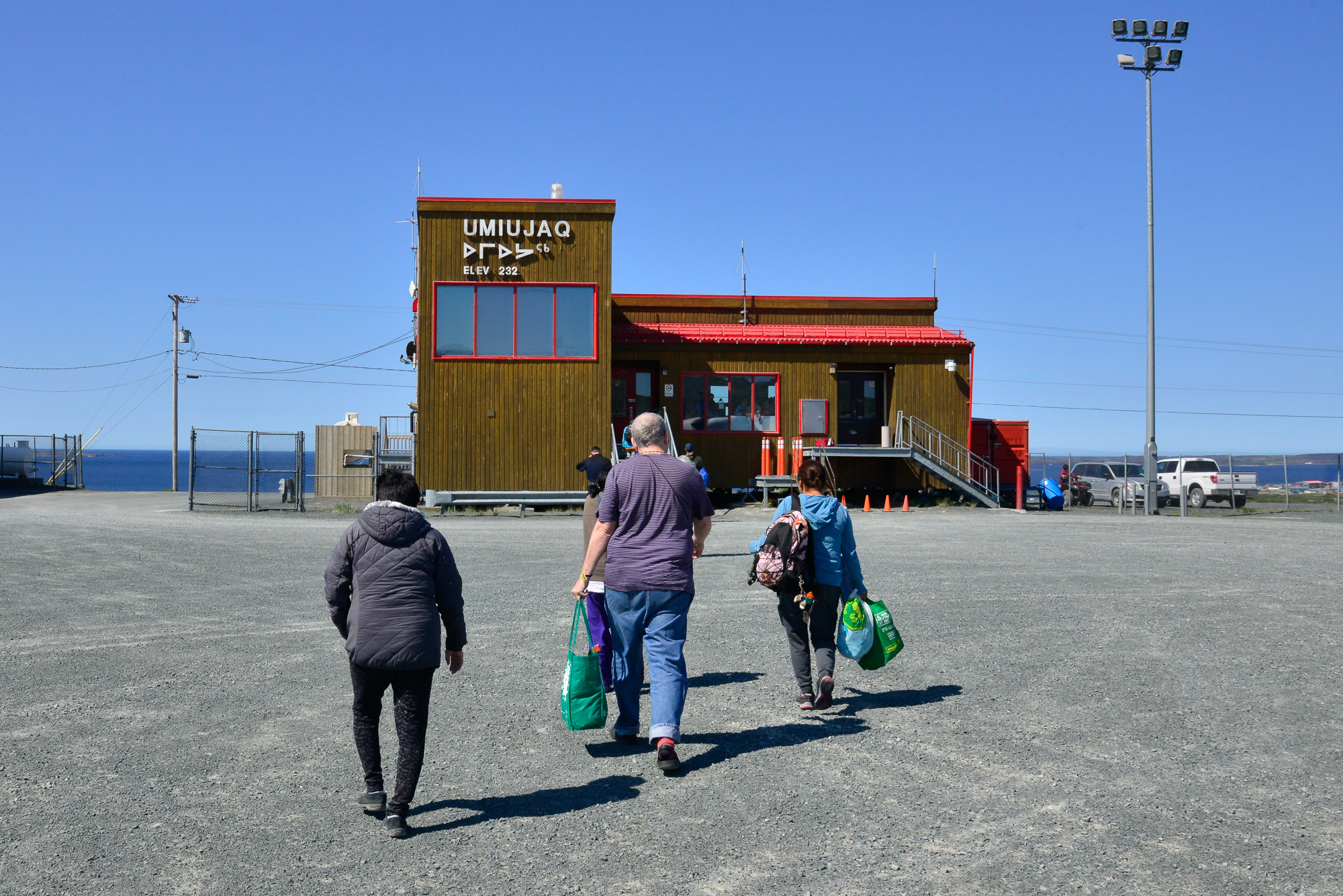
Cultural and Environmental Tourism
Umijujaq, Nunavik, Quebec
Tourists and residents disembark from the Air Inuit Twin Otter aircraft and head towards the little Umijujaq terminal. The people of Umijuaq recognize that their culture and their homeland is the driver and enabler of a sustainable economy.
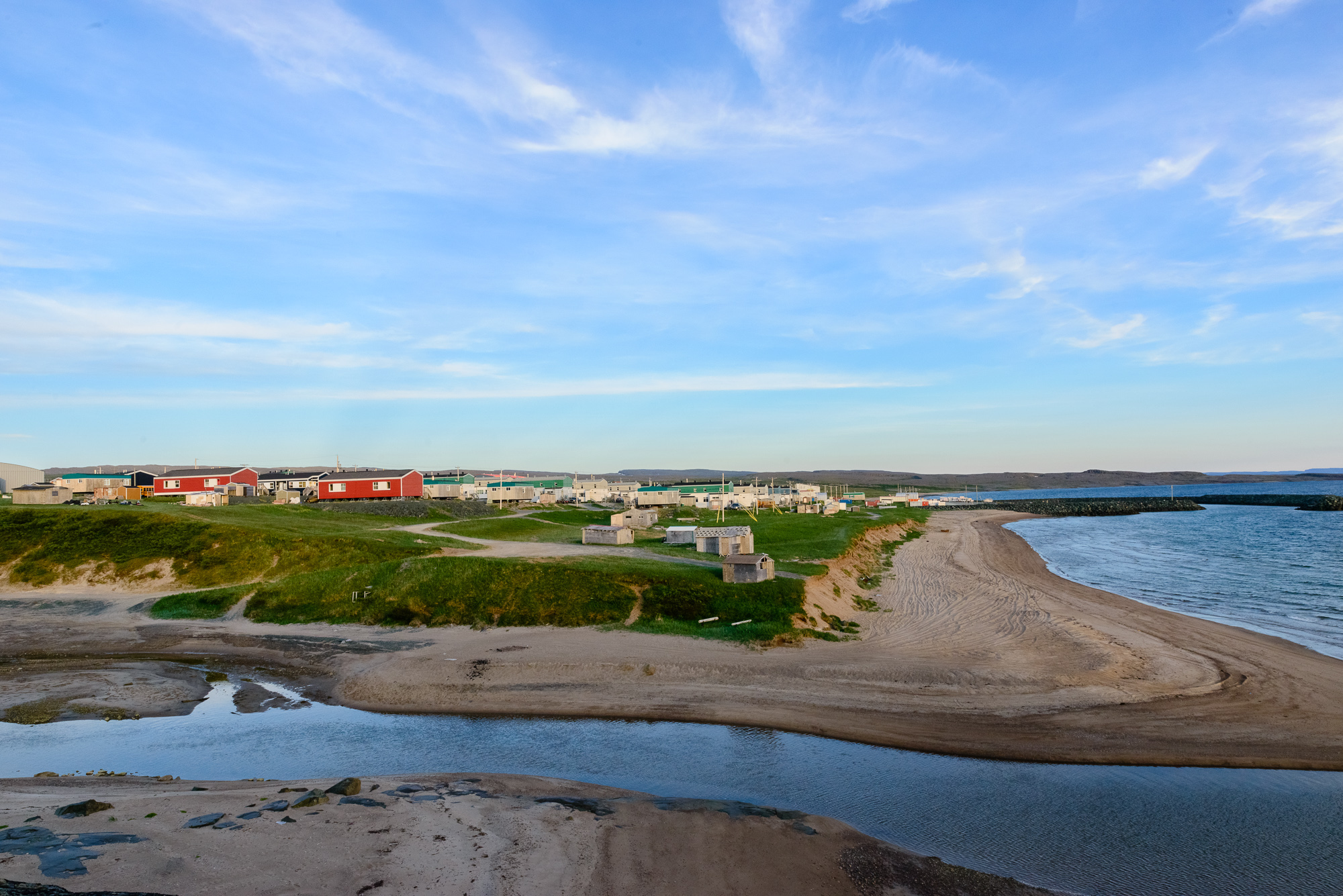
Umijujaq
Umijujaq, Nunavik, Quebec
Tursujuq National Park is in Umiujaq’s back yard. Established in 1986, this young village was created following the negotiations that led up to the signing of the James Bay and Northern Quebec Agreement in 1975. In the early 1980s, with the Great Whale River hydroelectric project threatening their landscape and culture, the Inuit requested relocation to a new community north of Kujjuarapik. Nearly one third of the Inuit from Kujjuarapik moved 100 miles north to Umiujaq in 1986. Today, some 450 people live in the village, a place where they preserve their traditional way of life in an area where fish and game are not threatened by industrial development. Here, the language is Inuktitut, and subsistence activities are still central to the way of life. Most hunting and fishing takes place in the Tasiujaq Lake area, and the primary catches are marine mammals, caribou, grouse, waterfowl and fish.
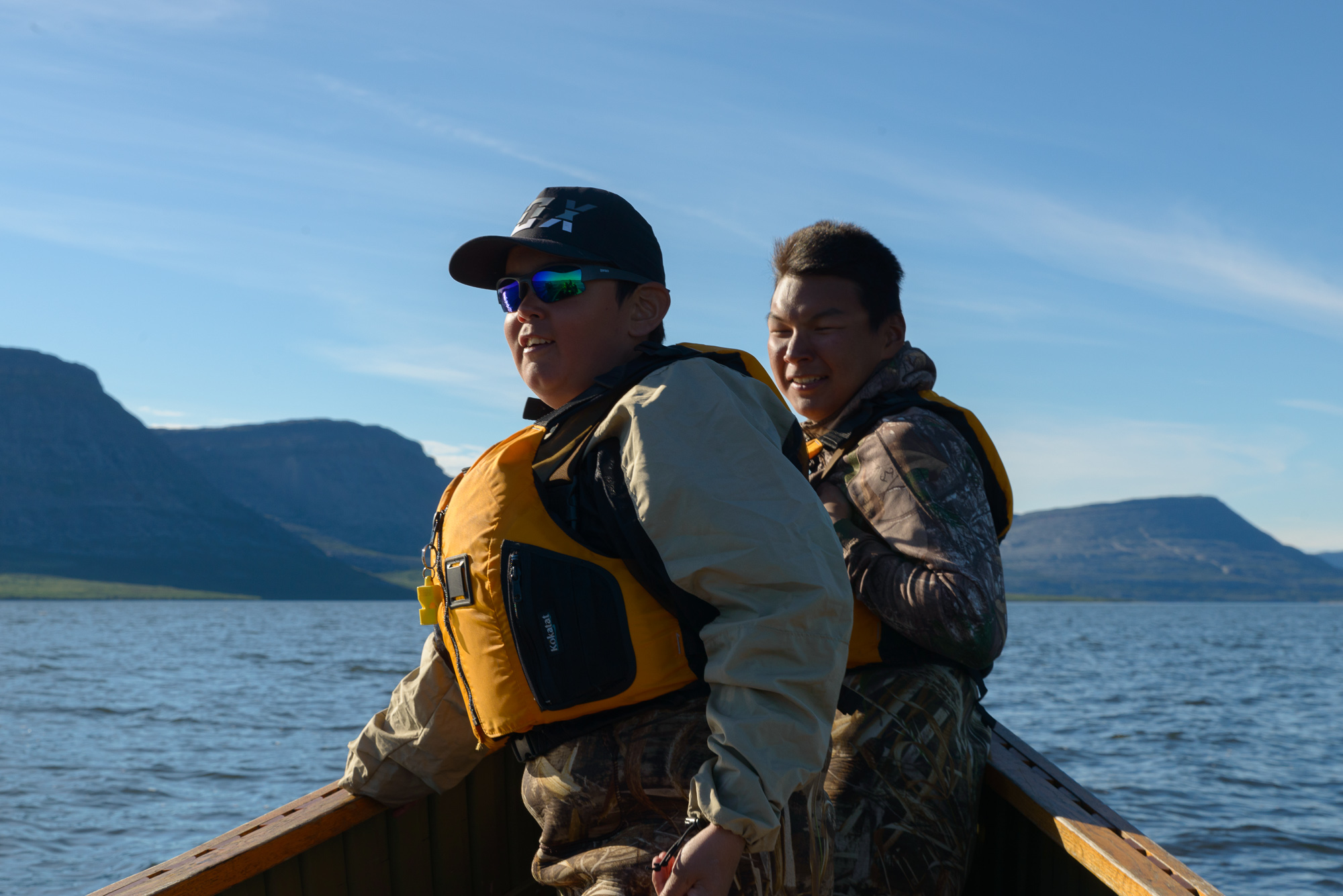
Assistant Park Wardens Samson Crow (age 16), and Nathan Kettler (age 17)
Tursujuq National Park, Nunavik, Quebec
When the Inuit from Kujjuarapik moved north and created the village of Umijujaq, they did so out of fear that Hydro-Quebec and industrial development would ruin their ancestral way of life and the environment that supported it. In order to forestall Hydro-Quebec’s plans to develop their new homeland, the Inuit of Umijujaq worked to create a new kind of economy based upon their traditional culture and their pristine environment. They put their influence behind the creation of Tursujuq National Park, protecting the environment they depend upon while creating economic opportunities in the sustainable cultural and environmental tourism industry.
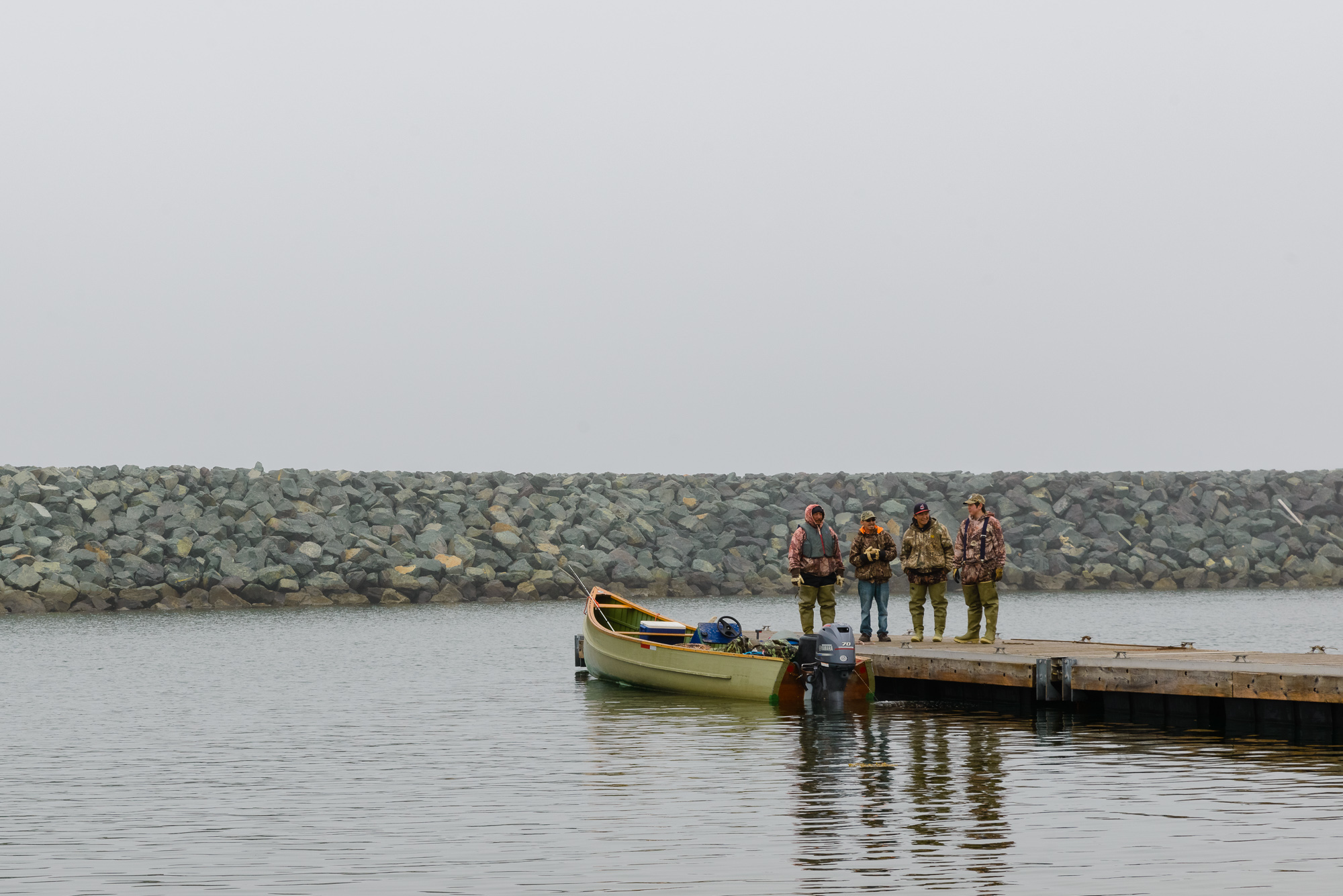
Charlie Qumarluq and Young Hunters
Umijujaq, Nunavik, Quebec
Charlie Qumarluq (far left) an Inuit elder in Umijujaq, Nunavik, Quebec, prepares to take some young hunters out on the land to hunt narwhal and catch whitefish. A respected elder, Charlie is a font of knowledge about traditional Inuit ways.
The Inuit have thrived in what is now Tursujuq National Park for thousands of years. The ancestors of the Inuit and Cree first occupied the region some 3,000 years ago. In the 18th century, hunters explored the area and set up camps near Tasiujaq Lake, Little Whale River, and Great Whale River. Since the Cree and Inuit had such different lifestyles, contact between the two groups was limited; the Inuit preferring to hunt marine animals along the coast and the Cree preffering to remain inland where there was more forest cover.
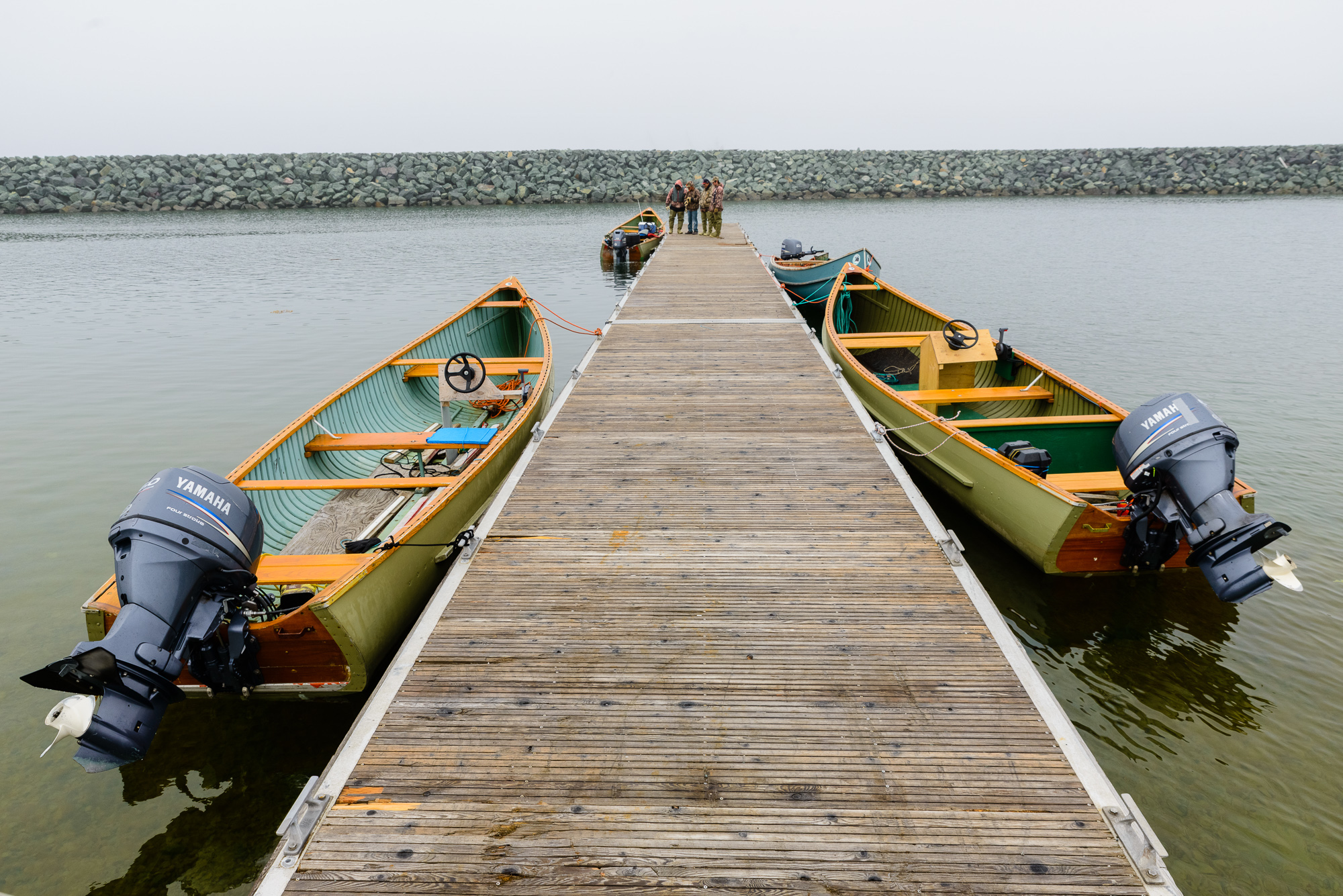
Freighter Canoes
Umijujaq, Nunavik, Quebec
Charlie Qumarluq and a group of young Inuit hunters prepare to head out onto the waters of Hudson Bay in their Nor-West freighter canoes. Used throughout the arctic and sub-arctic, over many decades these hand-made canvas-covered cedar canoes have become the traditional craft of the North and have largely replaced the skin boats used by the Inuit up until the mid-20th century.
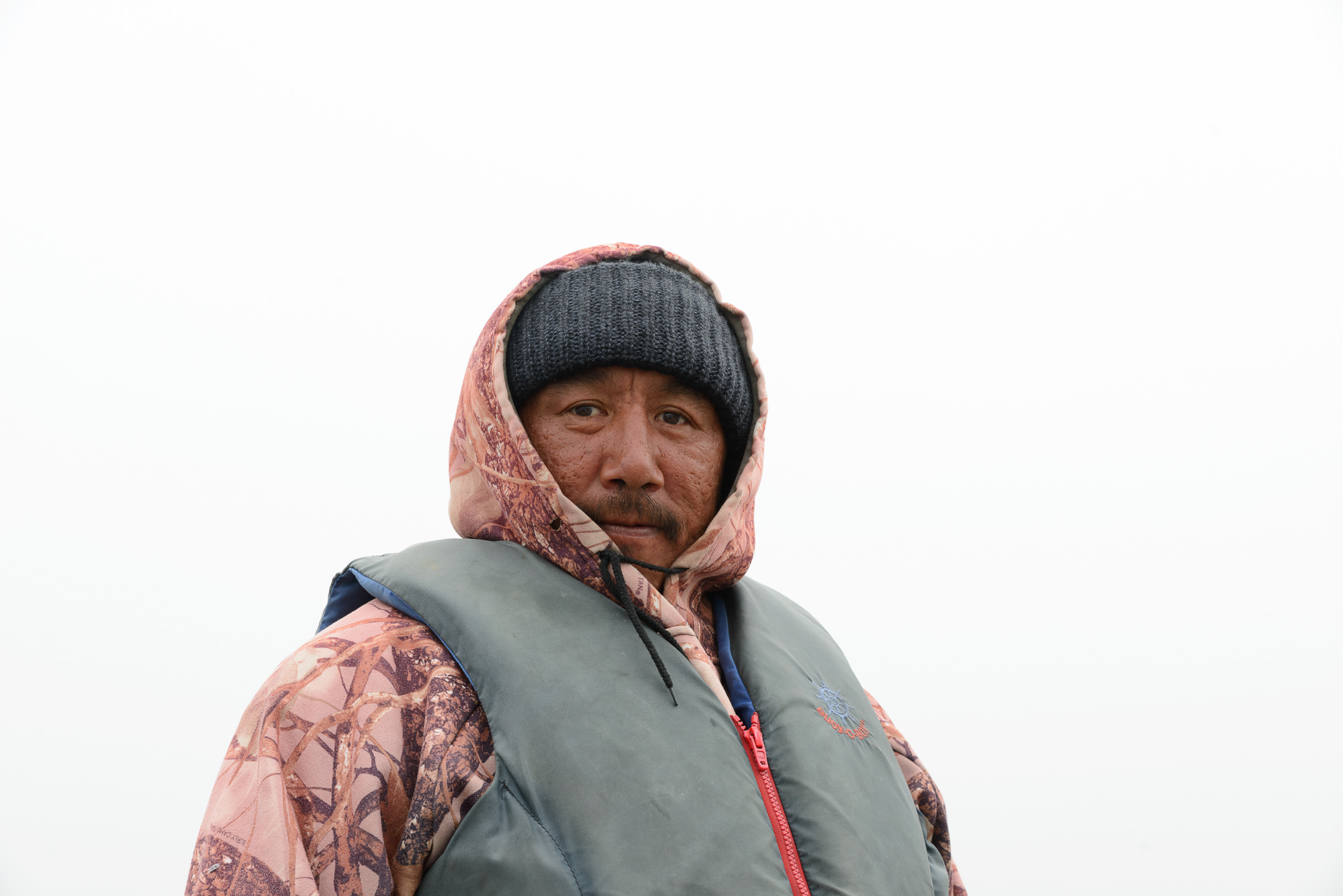
Charlie Qumarluk
Umijujaq, Nunavik, Quebec
Held in high regard by the by the young people in Unijujaq and other communities in the Hudson Bay region, Charlie is a skilled hunter, the keeper of Inuit traditions, and a strong mentor to Inuit youth.
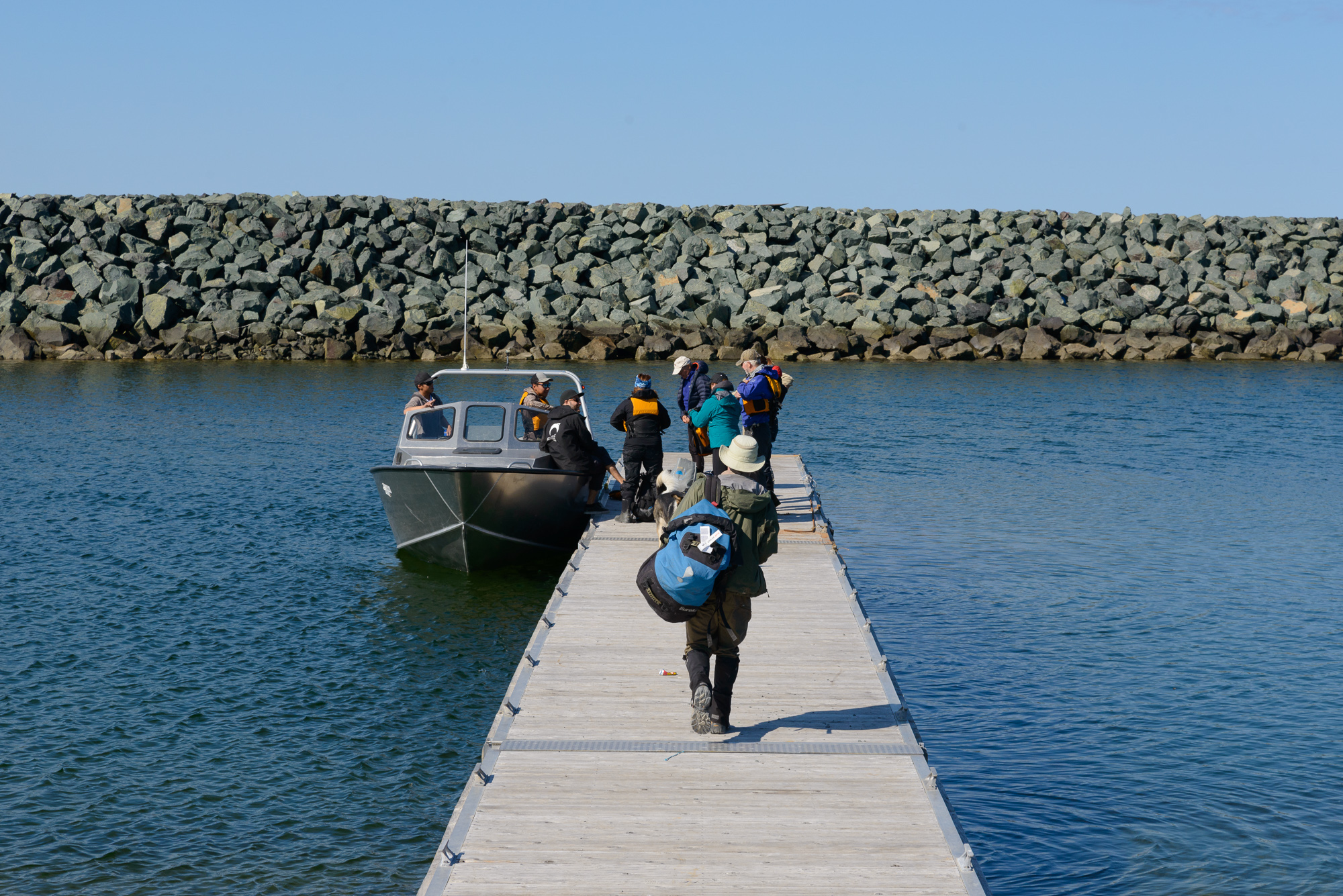
Heading to Nastapoka Falls
Umijujaq Nunavik, Quebec
A group of park visitors prepares to board the Tursujuq National Park powerboat for a day trip to the 100 foot high Nastapoka Falls. The trip will take the visitors up the east coast of Hudson Bay and alongside the nearby Nastapoka Islands. Many species of birds, such as common loons, eider ducks and peregrine falcons find summer shelter and nest on the abrupt, rocky cliffs plunging into Nastapoka Sound.
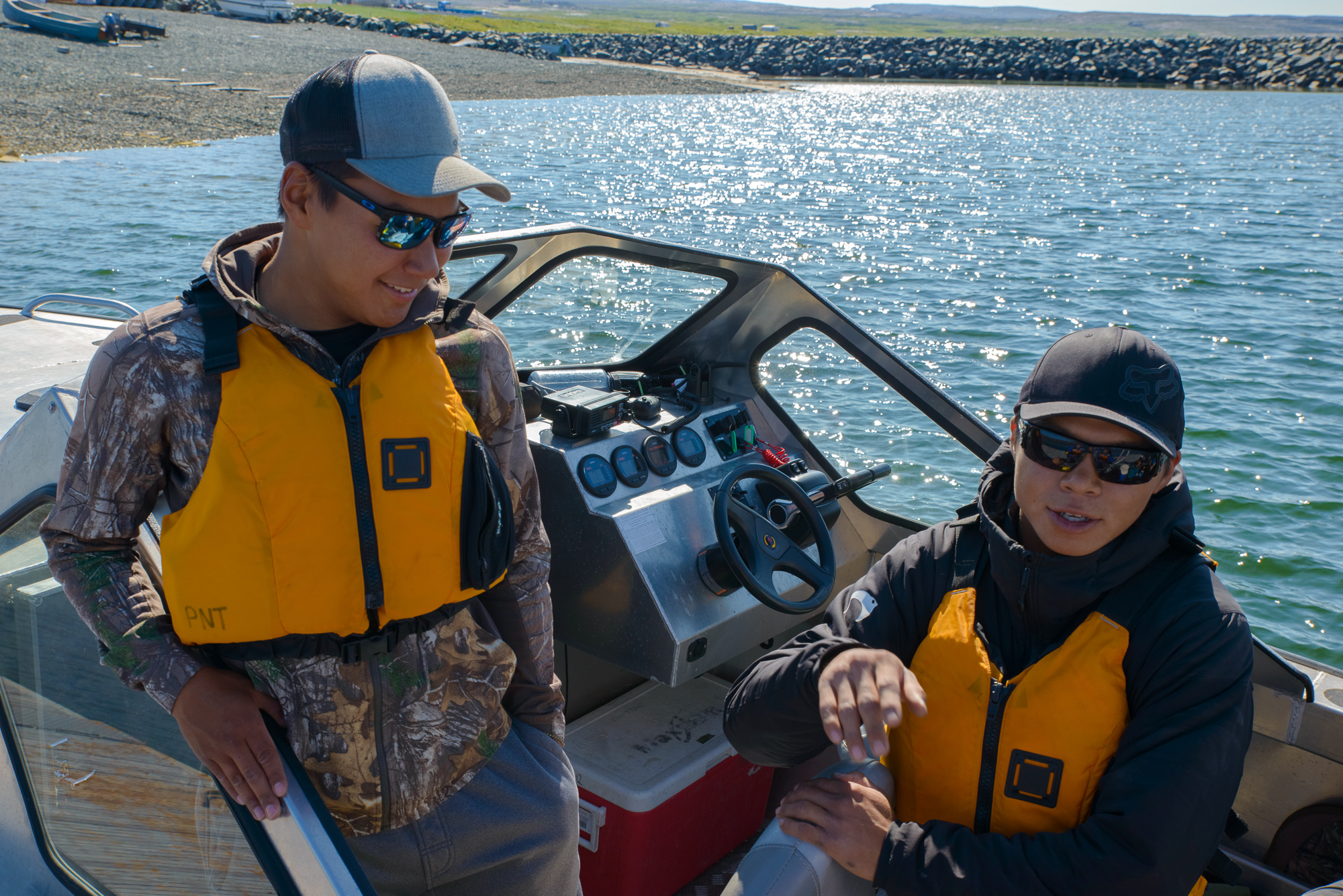
Nathan Kettler and Bobby Tooktoo
Umijujaq, Nunavik, Quebec
Nathan Kettler, assistant park warden, age 17, and Bobby Tooktoo, park warden, age 25, are employees of Tursujuq National Park. The park was created by the Inuit and Cree of northern Quebec to protect their traditional hunting grounds and way of life, to keep large-scale development out, and to build an economy around their traditional culture and spectacular unspoiled natural setting.
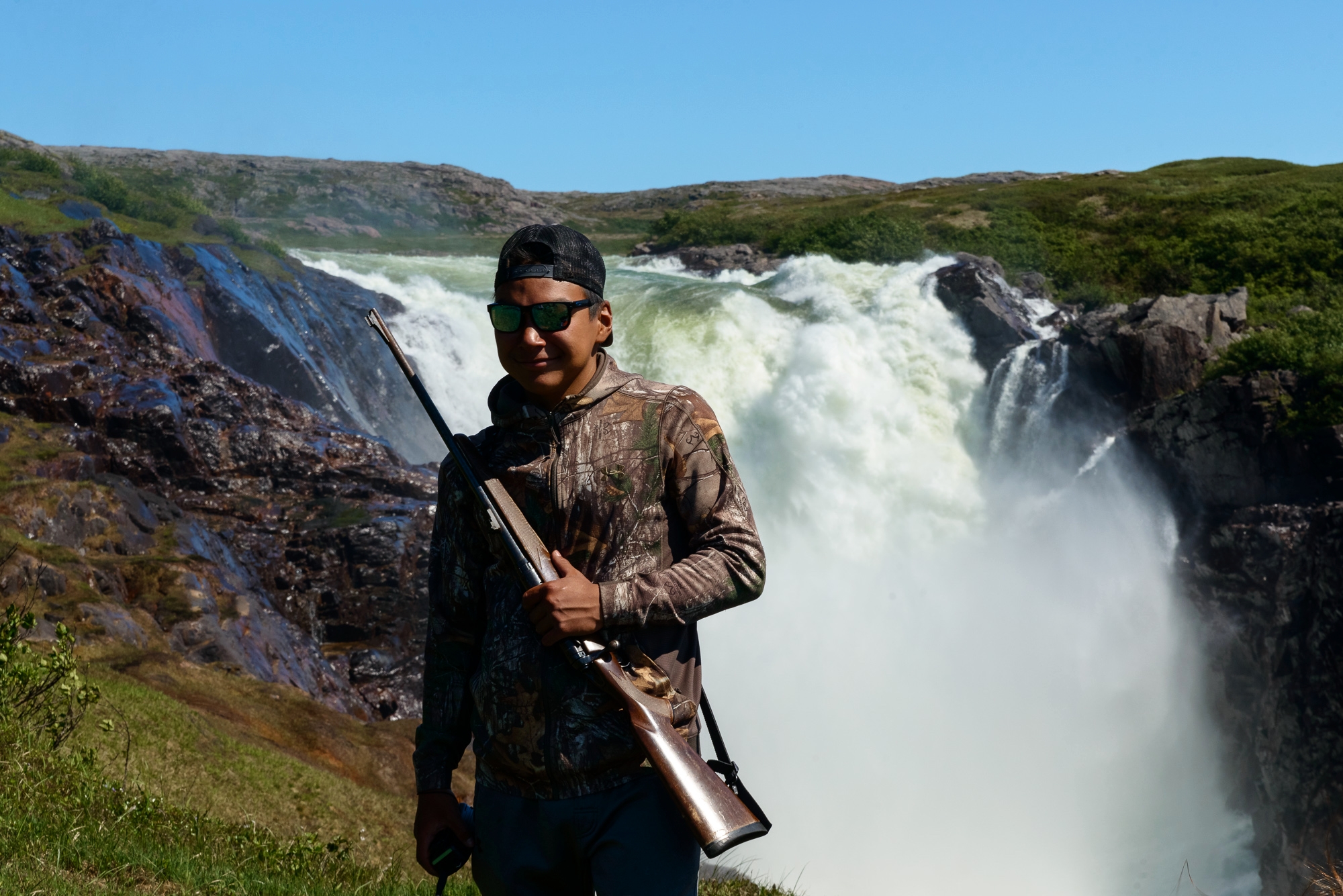
Nathan Kettler at Nastapoka Falls
Tursujuq National Park assistant park warden Nathan Kettler stands in front of Nastapoka Falls, a 100-foot-high waterfall plummeting into the waters of Hudson Bay. At age 17, Nathan is a skilled hunter and guide who is proud of his culture and tradtions and enjoys introducing visitors to his people’s culture and landscape.
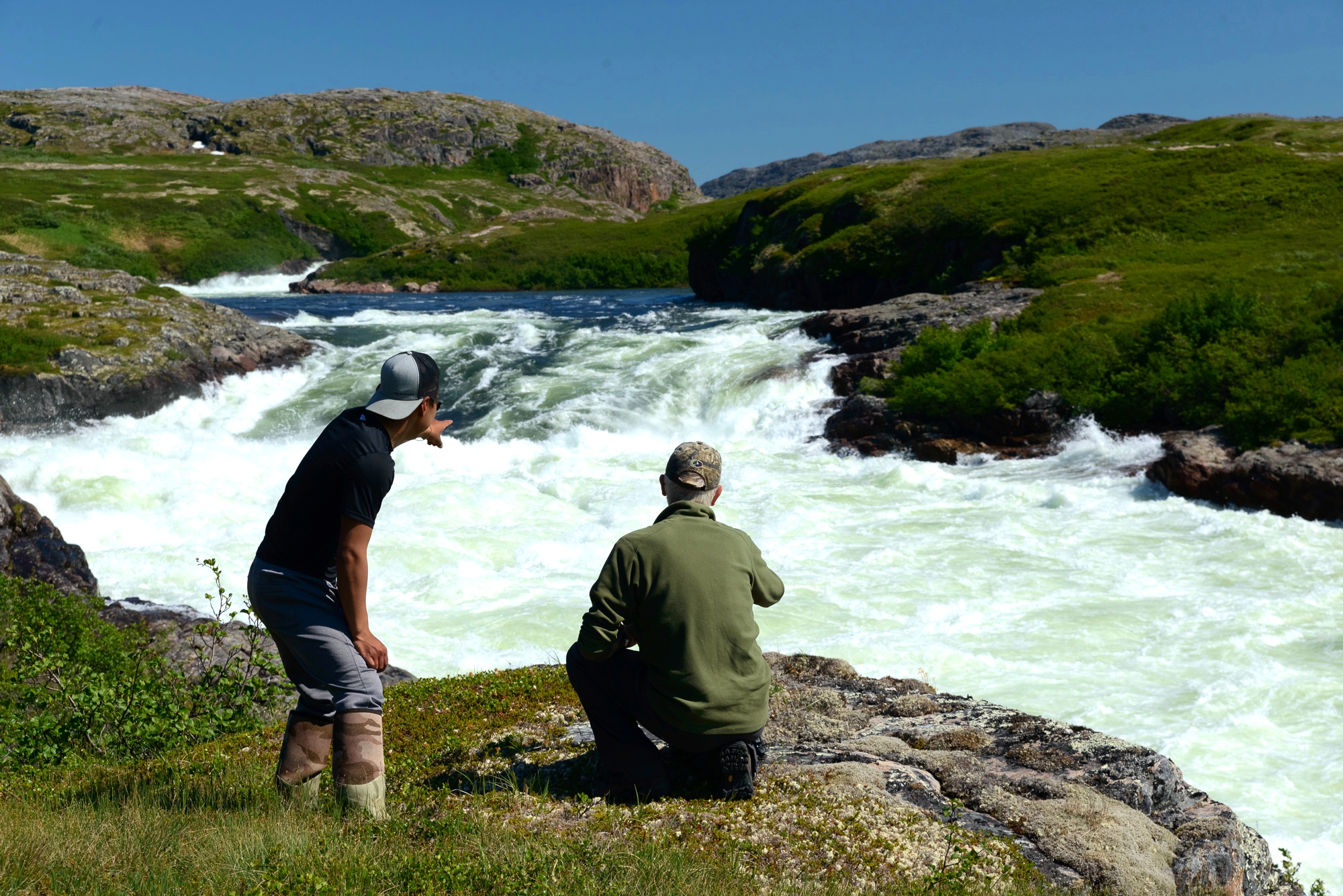
Introducing his Homeland
Tursujuq national Park, Nunavik, Quebec
Inuit Assistant park warden Nathan Kettler shows photographer and filmmaker Robin Tapley the upper reaches of Nastapoka Falls, where the Nastapoka River flows from the Hudson Bay uplands across the tundra to the Hudson Bay coast. Inuit have shaped the identity and history of Northern Québec, as confirmed by the many archaeological sites catalogued throughout the region. These sites provide evidence of traditional knowledge and the ingenuity of many generations to adapt to a rugged environment.

Nastapoka Falls - A Hydro-Electric Project Averted
Tursujuq National Park, Nunavik, Quebec
For many years Hydro-Quebec, a public utility that manages the generation, transmission and distribution of electricity in Quebec, planned to harness the electricity generating power of the Nastapoka River and Nastapoka Falls. Of course, it was precisely because of the threat Hydro-Quebec posed to their environment and way of life that the Inuit of Umijujaq moved north to protect and preserve their land and way of life. In 2012, The Inuit succeeded in creating Tursujuq National Park which encompasses the entire watershed of the Nastapoka River, thereby making it off-limits to hydro-development.
Hydro-Quebec was formed by the Government of Quebec in 1944, and the company soon began making massive investments in environmentally damaging hydro-electric projects such as Churchill Falls in Labrador and the James Bay Project in northern Quebec. Today Hydro-Quebec operates 63 hydroelectric power stations. More than 40 percent of Canada’s water resources are in Québec, and Hydro-Québec is the fourth largest hydropower producer in the world.
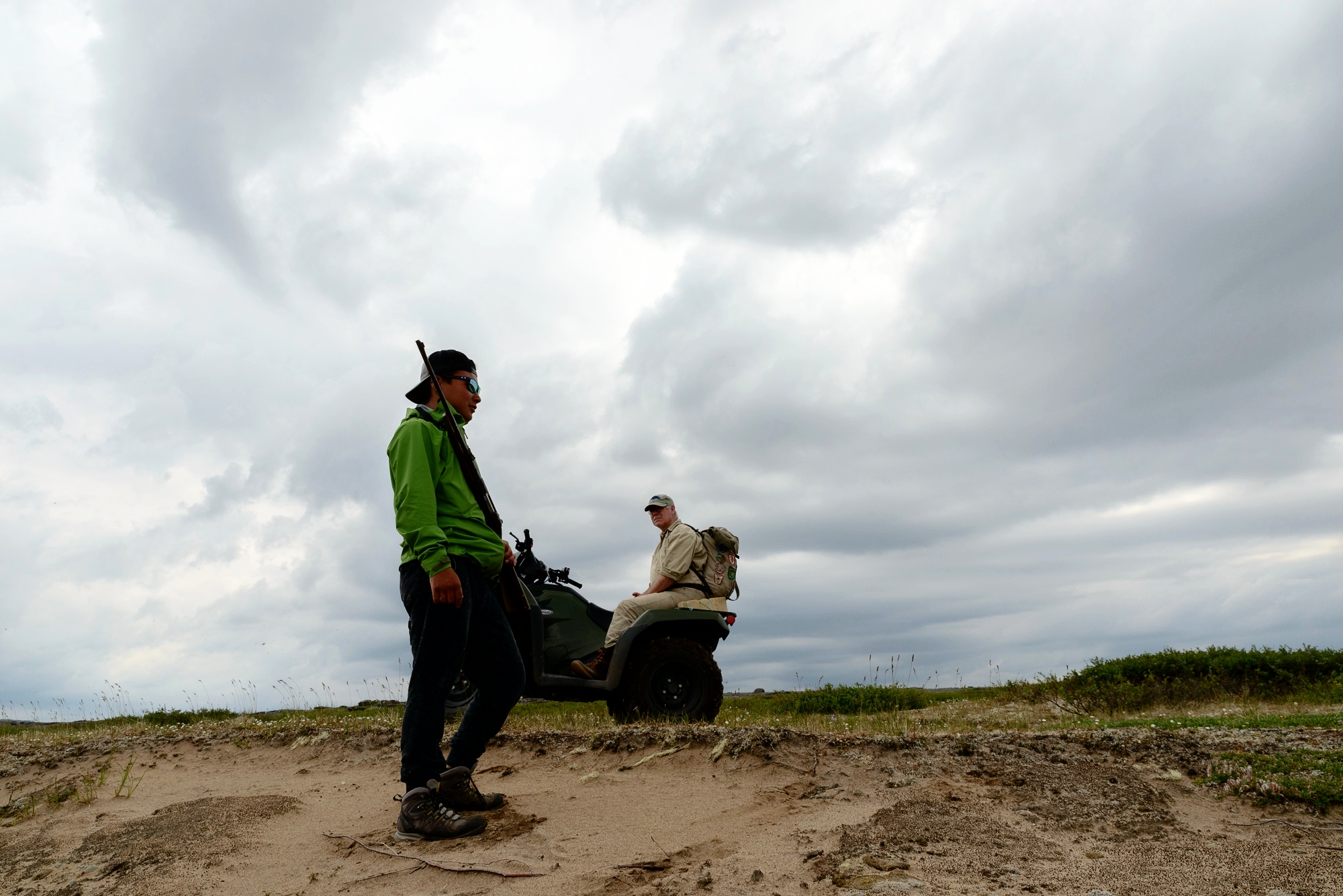
Nathan Kettler and Stephen Loring
Tursujuq National Park
Inuit assistant park warden Nathan Kettler and Smithsonian Museum arctic archeologist Stephen Loring take a break during a backcountry excursion “out on the land” to explore portions of Tursujuq National Park north of the village of Umijujaq.
As with all Nunavik parks, the virtually unchanged natural environment of Tursujuq National Park makes it a rare destination in the modern world. The park offers genuine ecotourism adventures led by local guides who are proud to promote the many distinct features of their homeland and their culture.
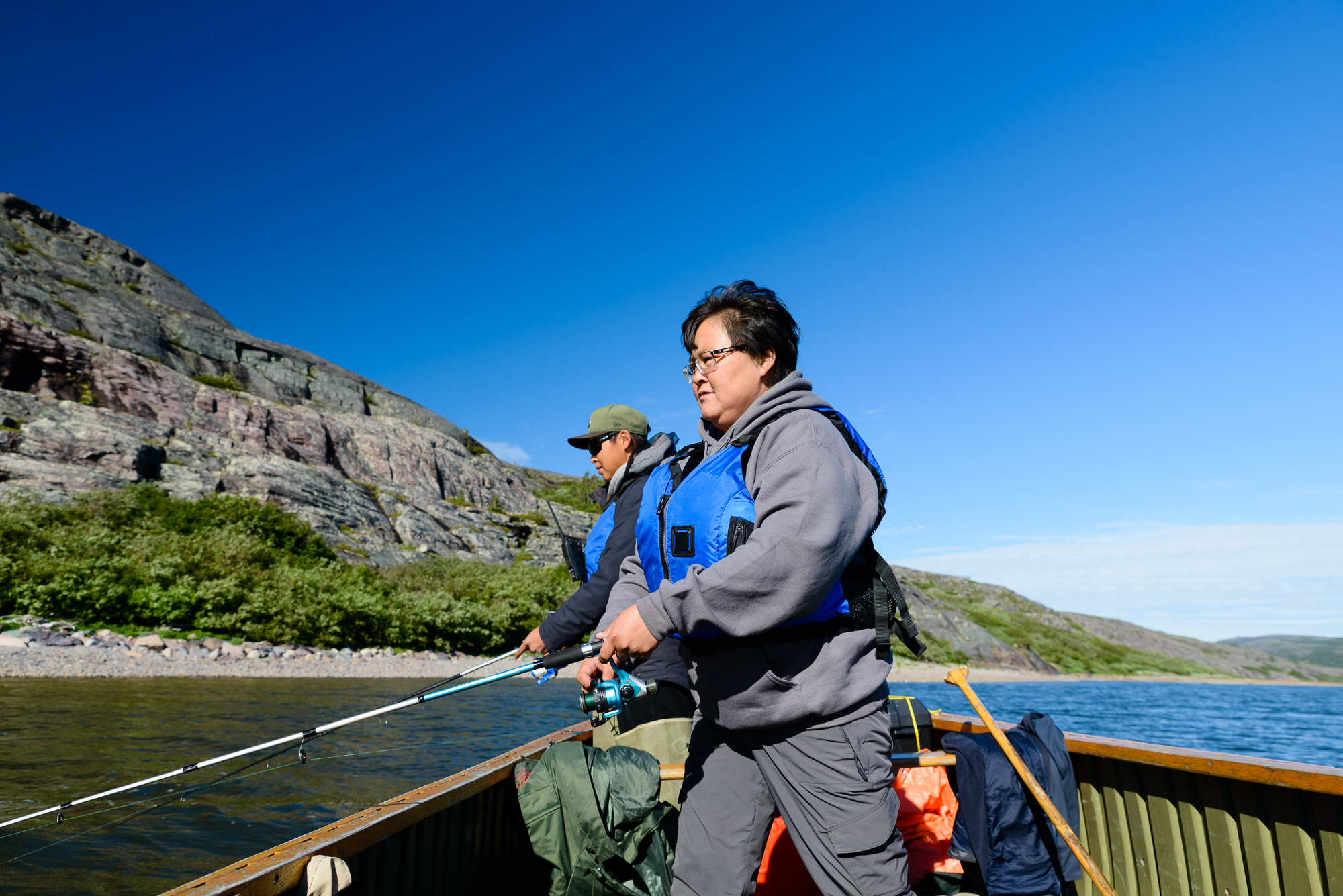
Fishing Trip
Tursujuq National Park, Nunavik, Quebec
Suvaki Tooktoo, park administrative technician, age 35 (front), and Putulik Tooktoo, park guide, age 27, cast for whitefish in the pristine waters of Richmond Gulf (called Tasiujaq by the Inuit). Rich in marine life, Tasiujaq supports both saltwater and freshwater fish. Arctic and brook char compete for habitat here, though the brook char dominates most of Tasiujaq’s tributaries.

Traditional Harpoon
Tursujuq National Park, Nunavik, Quebec
Assistant park warden Nathan Kettler attaches the spear head to a harpoon used for hunting beluga whale. In Nunavik beluga are still hunted in the traditional way - by harpooning the whale with a detachable harpoon head attached to a long line with a float. When the whale is struck by the harpoon, the spear head embeds into the whales flesh, thereby attaching the line and float. The float keeps the whale from submerging, and the whale eventually tires, allowing the Inuit hunter to approach it in his canoe and shoot it with a firearm. This method of hunting is effective, and produces very few if any wounded and escaped animals.
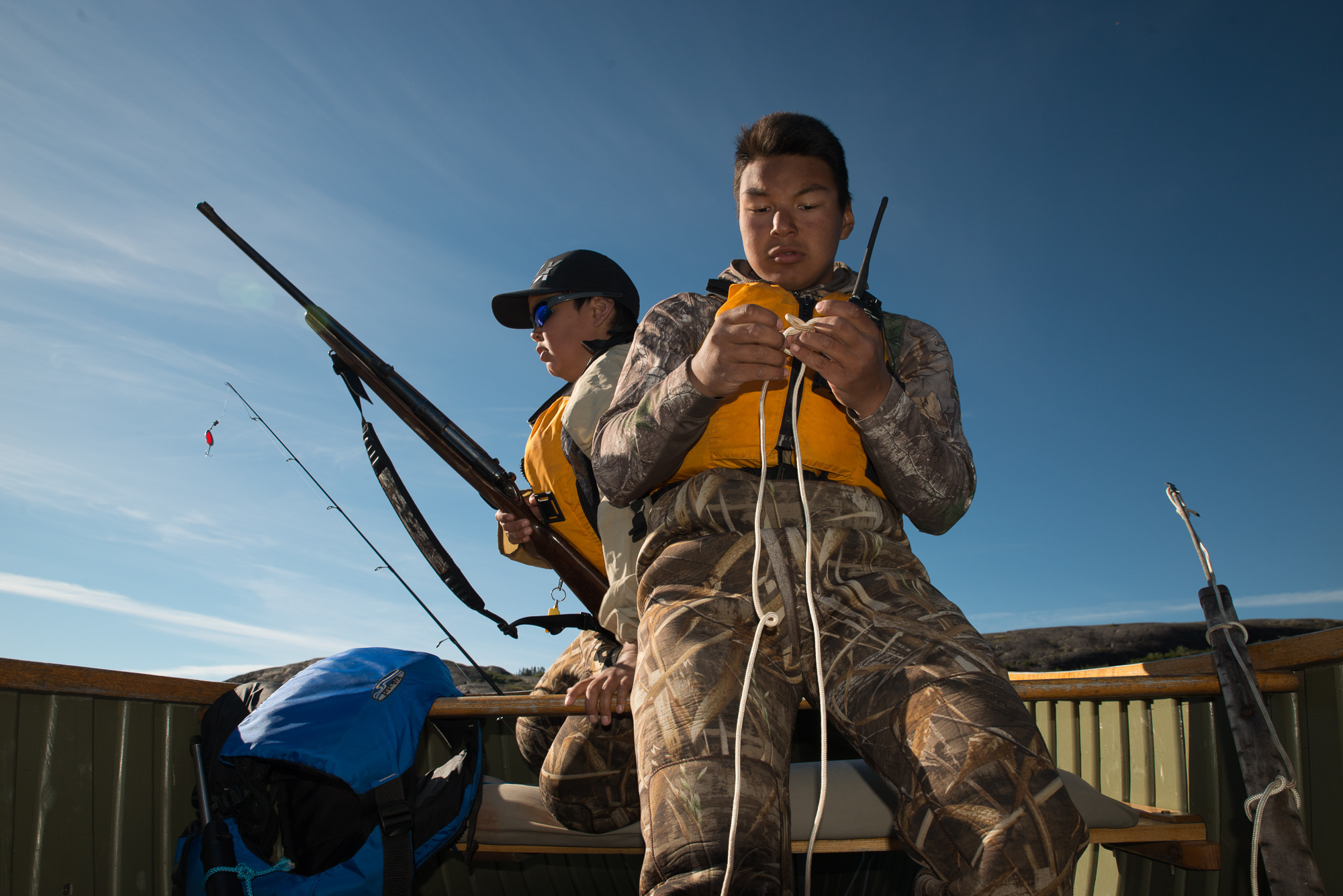
Preparing for a Beluga Hunt
Tursujuq National Park, Nunavik, Quebec
The Nastapoka and Little Whale River are two major estuaries where the belugas can be observed from mid-July to late August. Tasiujaq, with its brackish tidal waters, is a haven for seal and beluga. Assistant park warden Samson Crow, age 16, and assistant park warden Nathan Kettler, age 17, prepare their equipment for a beluga hunt on Tasiujaq.
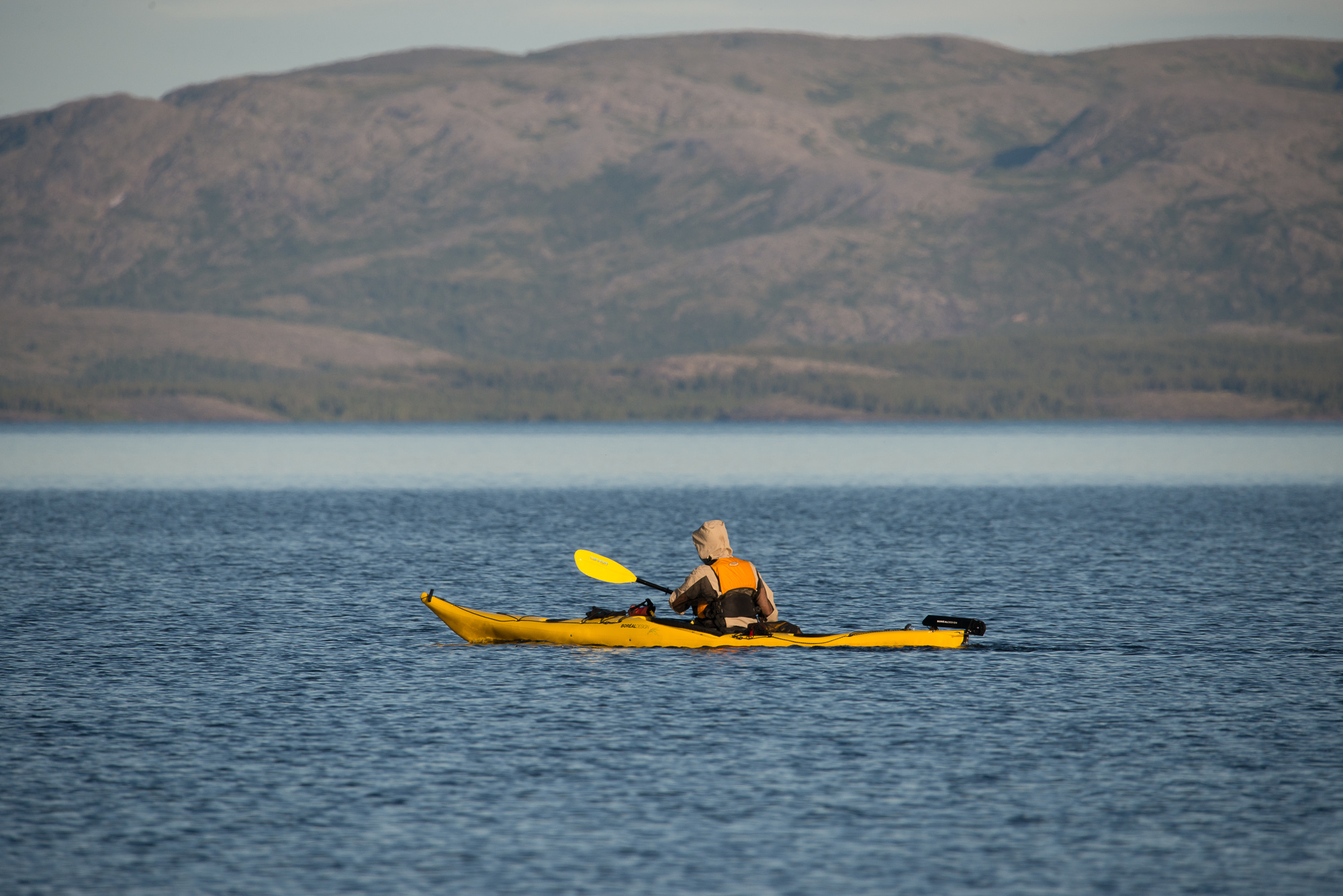
Kayaking on Tasiujaq
Tursujuq National Park, Nunavik, Quebec
Inuit park warden Joshua Davidee Sala paddles his kayak across Tasiujaq’s pristine waters the way his ancestors have done for thousands of years. The Inuit of Umijujaq are proud of their natural and cultural heritage, and have taken important steps to preserve both in perpetuity.
They know that in order to preserve their distinctive culture, they must preserve the natural environment that has sustained it since time immemorial.
And they know that in order to preserve their distinctive environment, they must preserve the culture that has sustained it since time immemorial.
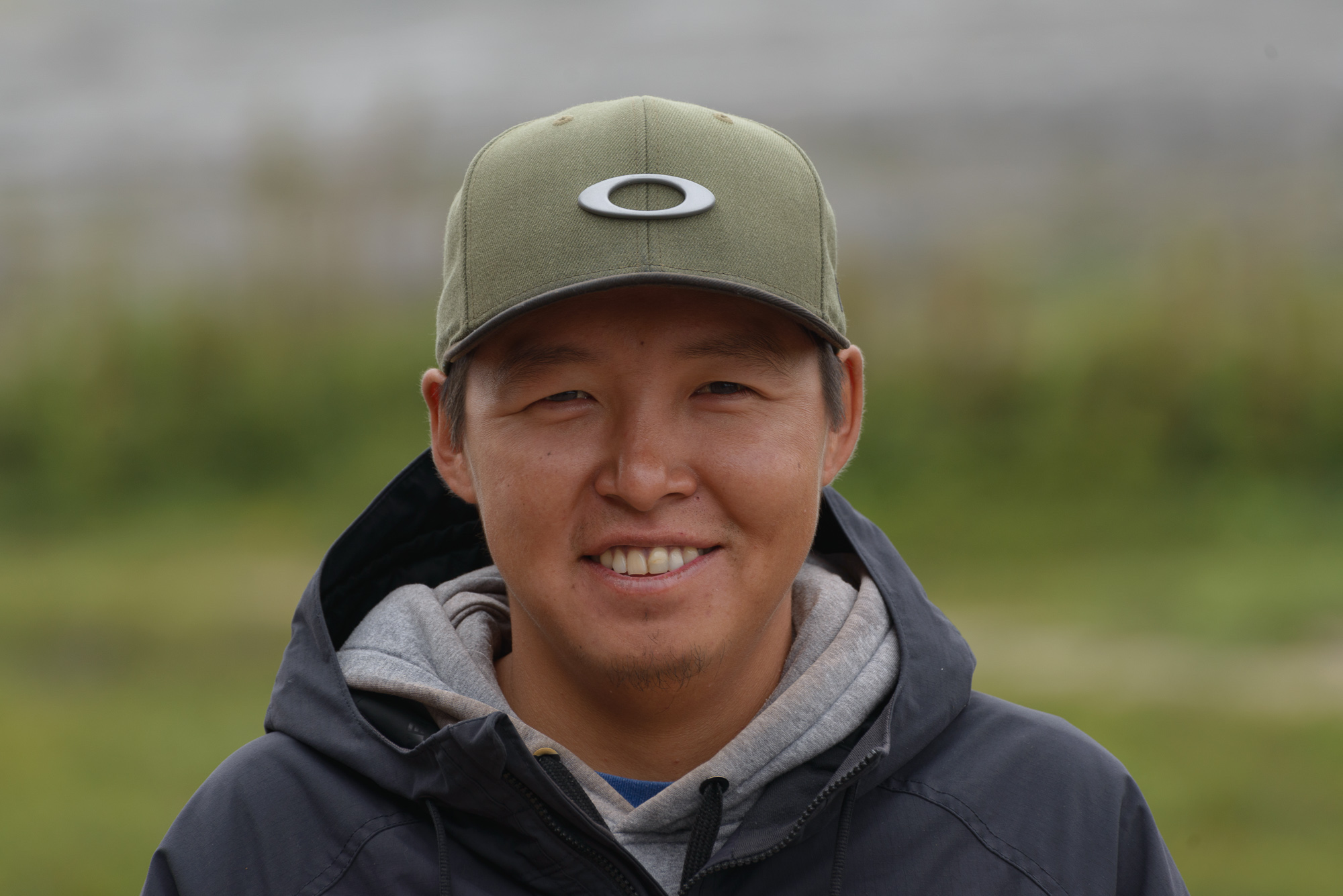
Putulik Tooktoo, Park Guide
Tursujuq National Park, Nunavik, Quebec
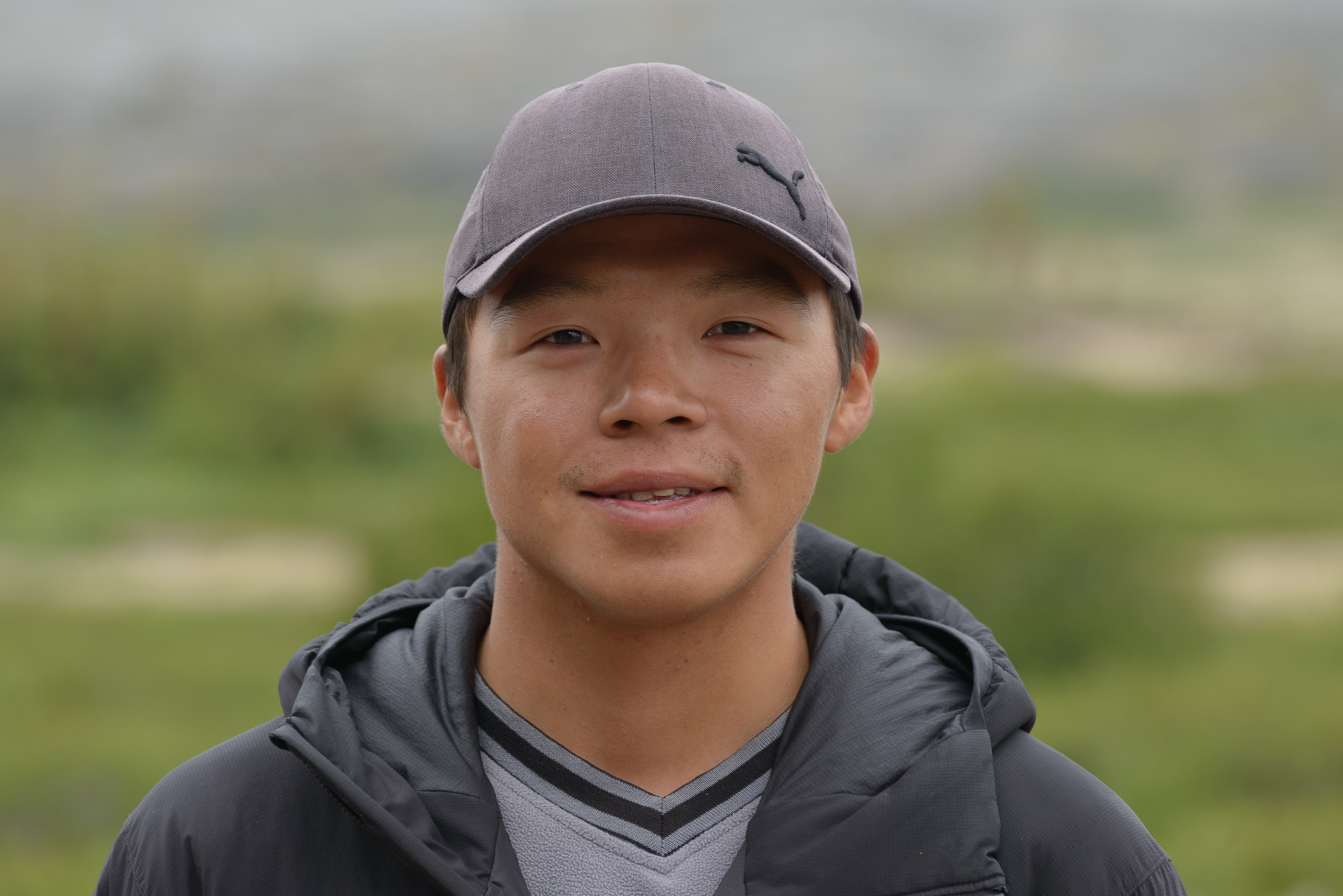
Bobby Tooktoo, Park Warden
Tursujuq National Park, Nunavik, Quebec
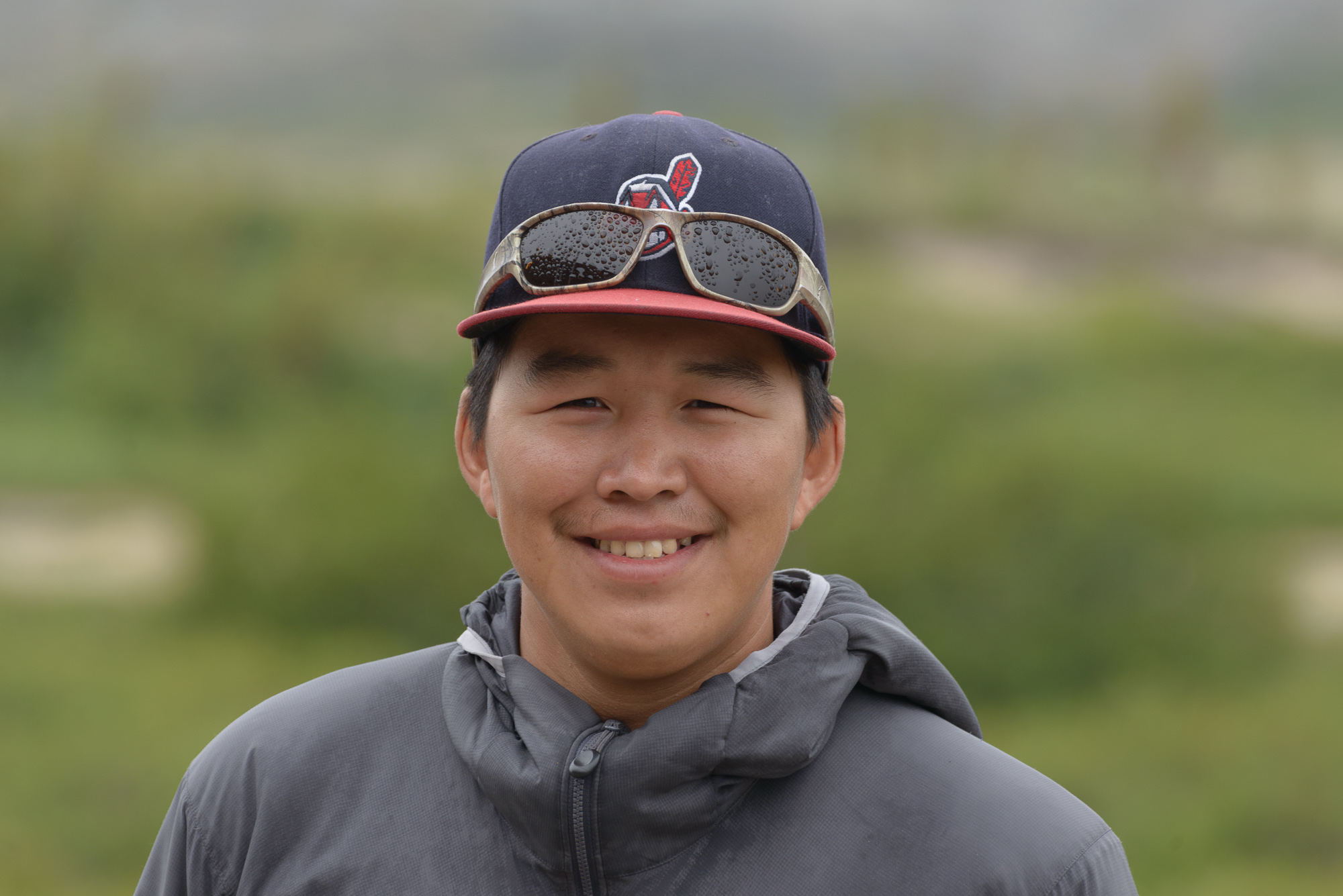
Joshua Davidee Sala, Park Warden
Tursujuq National Park, Nunavik, Quebec
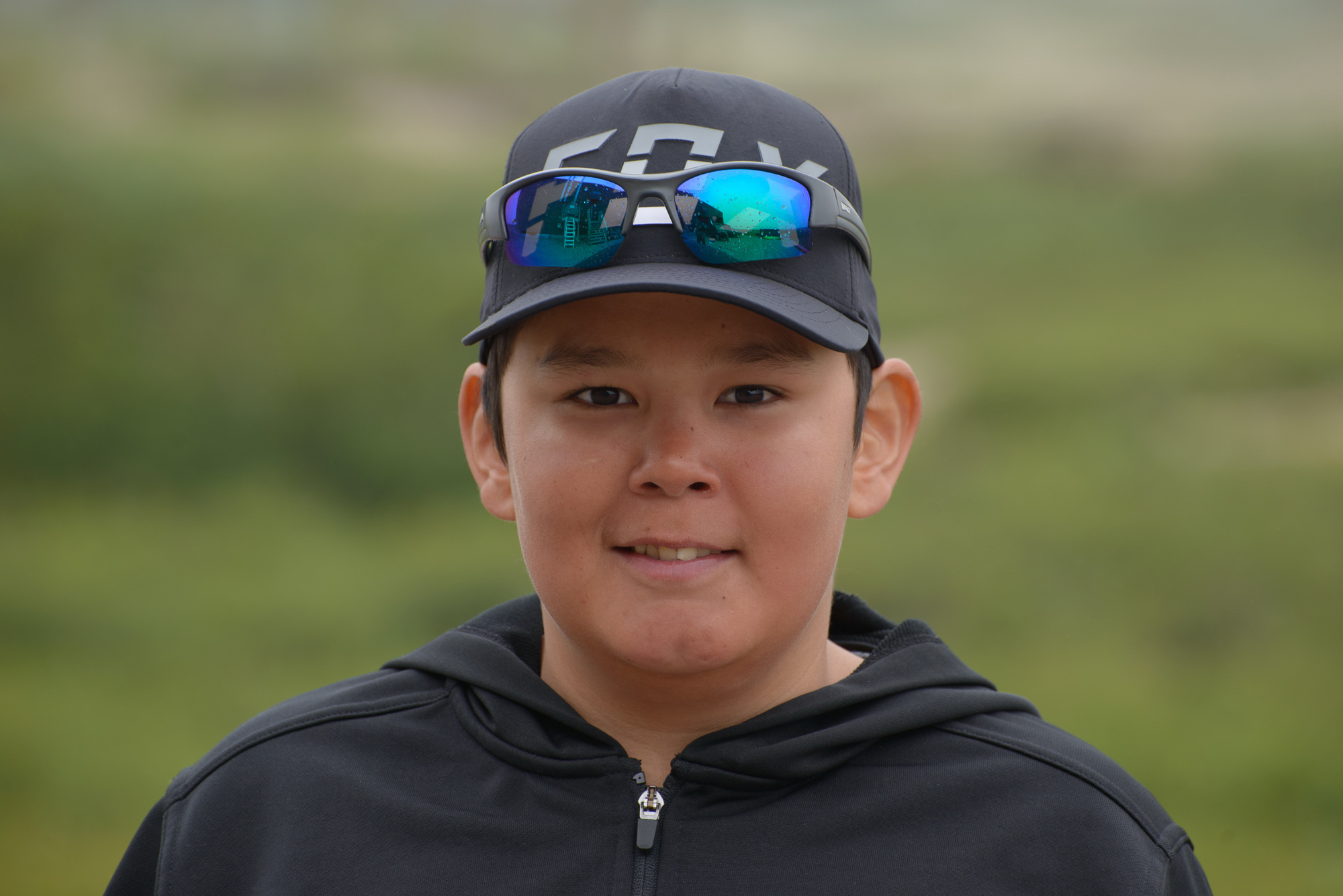
Samson Crow, Assistant Park Warden
Tursujuq National Park, Nunavik, Quebec

Umijujaq Skies
Umijujaq, Nunavik, Quebec






















Umijujaq, Nunavik, Quebec
Ecotourists exit the little Twin Otter aircraft that brought them to Umijujaq. Covering more than 10,000 square miles, Tursujuq National Park is the largest in the province. The park headquarters is located in the Inuit community of Umiujaq, on the shores of Hudson Bay. Traces of human activity dating back 3,000 years have been found in the area, as well as evidence of Inuit and Cree trading posts.
The Inuit of Umijujaq assisted in the creation of the park, choosing a sustainable economy based upon traditional culture and a pristine natural environment rather than a short-lived and environmentally destructive economy based upon mineral extraction. They encourage visitors to experience the captivating beauty of this immense territory and cultural crossroads defined by the spectacular Hudson cuestas, Lac Tasiujaq with its brackish tidal waters which are a haven for seal and beluga, and Lac Wiyâshâkimî, a double meteor impact basin and the second largest natural lake in Québec.
